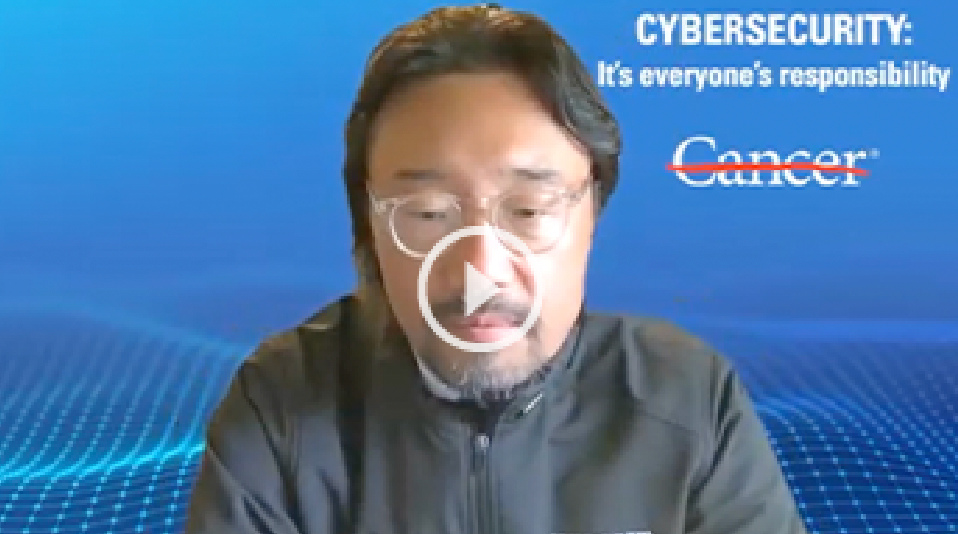Larotrectinib Continues to Show Promise in Pediatric TRK Fusion-Positive Cancer
Rapid and durable responses continue to be demonstrated with larotrectinib in pediatric patients with tropomyosin receptor kinase fusion-positive cancer.

Larotrectinib (Vitrakvi) continues to demonstrate rapid and durable tumor-agnostic efficacy, extended survival, and a favorable safety profile in pediatric patients with tropomyosin receptor kinase (TRK) fusion-positive cancer, according to an expanded dataset, according to findings presented in a poster at the 2022 American Society of Clinical Oncology (ASCO) Annual Meeting.1
These findings demonstrate the need to identify neurotrophic tyrosine receptor kinase (NTRK) gene fusions, which are oncogenic drivers in various tumor types across all ages but have a high incidence (> 90%) in pediatric solid tumors.
“In this expanded data set of pediatric patients with a longer follow-up, larotrectinib continues to demonstrate a rapid and durable efficacy with an extended survival benefit. Larotrectinib had a favorable safety profile with no new safety signals. These results highlight the importance of identifying NTRK gene fusions in pediatric patients with solid tumors to identify those patients that will most likely benefit from treatment with TRK inhibitor therapy,” stated Leo Mascarenhas, MD, MS, Deputy Director, Cancer and Blood Disease Institute at Children’s Hospital Los Angeles and Associate Professor of pediatrics at Keck School of Medicine of USC, during a presentation of the poster.
The first-in-class, central nervous system (CNS)-active, highly selective tropomyosin receptor kinase (TRK) inhibitor, larotrectinib, is currently approved for both pediatric and adult patients who have TRK fusion-positive cancer. Larotrectinib previously demonstrated an objective response rate (ORR) of 88% across 78 pediatric patients with non-CNS cancer, according to van Tilburg et al.2
In this analysis of an expanded dataset of pediatric patients with TRK fusion-positive cancer, patients aged 18 years and younger with non-CNS TRK fusion-positive cancer were evaluated from 2 larotrectinib clinical trials; SCOUT (NCT02637687) and NAVIGATE (NCT02576431).
Between the 2 studies, 94 patients were enrolled by July 20, 2021, the data cut-off. The pediatric patients with non-primary CNS TRK fusion cancer had tumor types consisting of infantile fibrosarcoma (52%), other soft tissue sarcoma (40%), congenital mesoblastic nephroma (2%), thyroid cancer (2%), bone sarcoma (1%), breast cancer (1%), and melanoma (1%). NTRK gene fusion status was determined prior to enrollment with patients having NTRK1 (43%), NTRK2 (3%), or NTRK3 (54%) gene fusions.
The median age of those enrolled in the trial was 2.2 years (range 0–18 years), and out of the 62 (66%) participants who received prior systemic therapy, 48 (51%) received 2 or less lines with 14 (15%) receiving 3 or more. Additionally, 75 (80%) patients had a Lansky/Karnofsky performance status of 90-100 with the other 19 patients ranging between 50-60.
Most patients enrolled in the expanded dataset received initial larotrectinib at a dose of 100mg/m2 twice daily (BID; n = 85) with 3 patients administered either 9.6-55mg/m2 of larotrectinib BID and 6 administered 17.3-120 mg/m2BID.
The primary end point was the investigator assessed ORR per RECIST v1.1 with secondary endpoints including duration of response (DoR), progression-free survival (PFS), overall survival (OS), and safety.
For the 93 evaluable patients included, larotrectinib was shown to be efficacious across most tumor types with an INV-assessed best ORR of 84% (95% CI, 75-91). There were 35 patients (38%) who had a complete response (CR), which included 2 pending confirmation and 10 pathological CR, 43 (46%) who had a partial response with 2 pending confirmation, 11 (12%) with stable disease, 2 (2%) with progressive disease, and 2 (2%) who were not determined.
The median DoR was 43.3 months (95% CI, 23.4-NE) with a median follow-up of 26.0 months, and a median time to response of 1.8 months. Median PFS was 37.4 months (95% CI 22-NE) and OS was not reached at the median follow-up of 21.2 and 30.3 months, respectively. Additionally, the 36-month OS rate was 93% (95% CI, 86–99).
In terms of safety, no new or unexpected treatment-emergent adverse events and no treatment-related deaths were reported. Treatment-related adverse events (TRAEs) occurred in 81% of patients with 23% being considered grade 1, 28% grade 2, 25% grade 3, and 5% grade 4. Increased aspartate aminotransferase was the most common TRAE which occurred in 31 patients (33%). Other common TRAEs included vomiting, increased alanine aminotransferase, anemia, decreased neutrophil count, nausea, and more.
Further, a total of 12% of patients had neurological TRAEs occur, with 5% considered grade 1, 4% grade 2, and 2% grade 3. The most common neurological TRAE was headache which occurred in 5 patients (5%). Other neurological TRAEs included insomnia, agitation, dizziness, irritability, gait disturbance, and restlessness. Four patients (4%) ended up discontinuing treatment due to TRAEs.
References:
1. Mascarenhas L, Martinus van Tilburg C, Doz F et al. Efficacy and safety of larotrectinib in pediatric patients with tropomyosin receptor kinase (TRK) fusion-positive cancer: An expanded dataset. J Clin Oncol. 2022; 40 (suppl 16): 10030). doi: 10.1200/JCO.2022.40.16_suppl.10030
2. van Tilburg C, Albert C, Bielack S et al. Efficacy and Safety of Larotrectinib in pediatric patients with non-central nervous system (cns) tropomyosin receptor kinase (trk) fusion-positive cancer: an expanded dataset. Neuro Oncol. 2022 6;997-1007. doi: 10.1093/neuonc/noab274.
Brose and Laetsch Discuss Rare Actionable Targets in Patients With Thyroid Cancer
January 12th 2023During a Targeted Oncology case-based roundtable event, Marcia S. Brose, MD, PhD, and Theodore W. Laetsch, MD, discussed the data supporting the use of NTRK inhibitors in a patient with metastatic papillary thyroid cancer.
Read More





